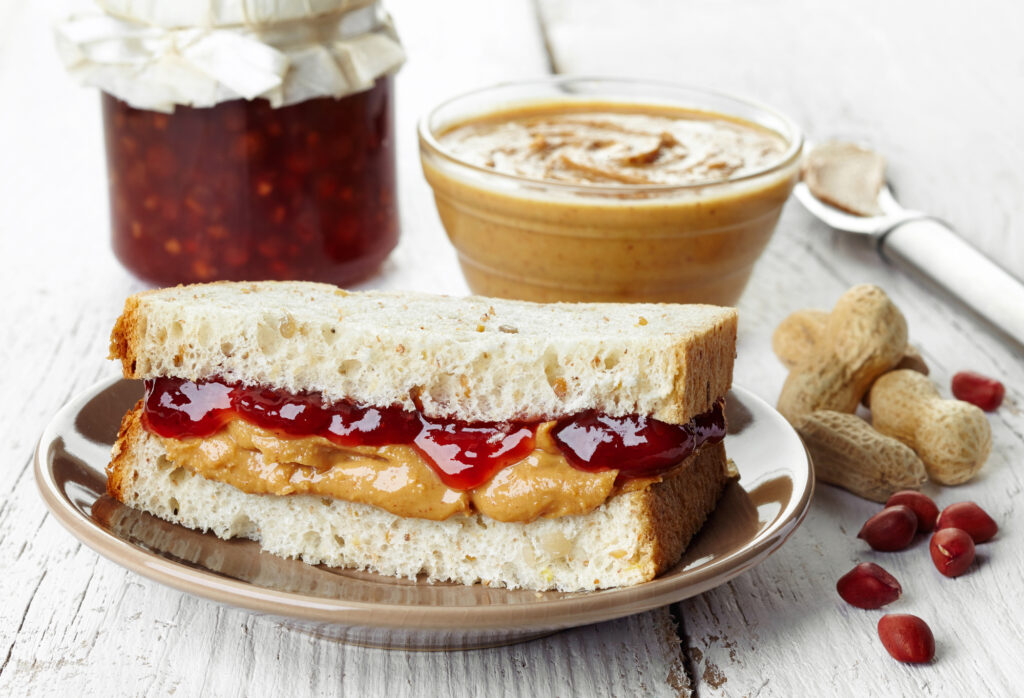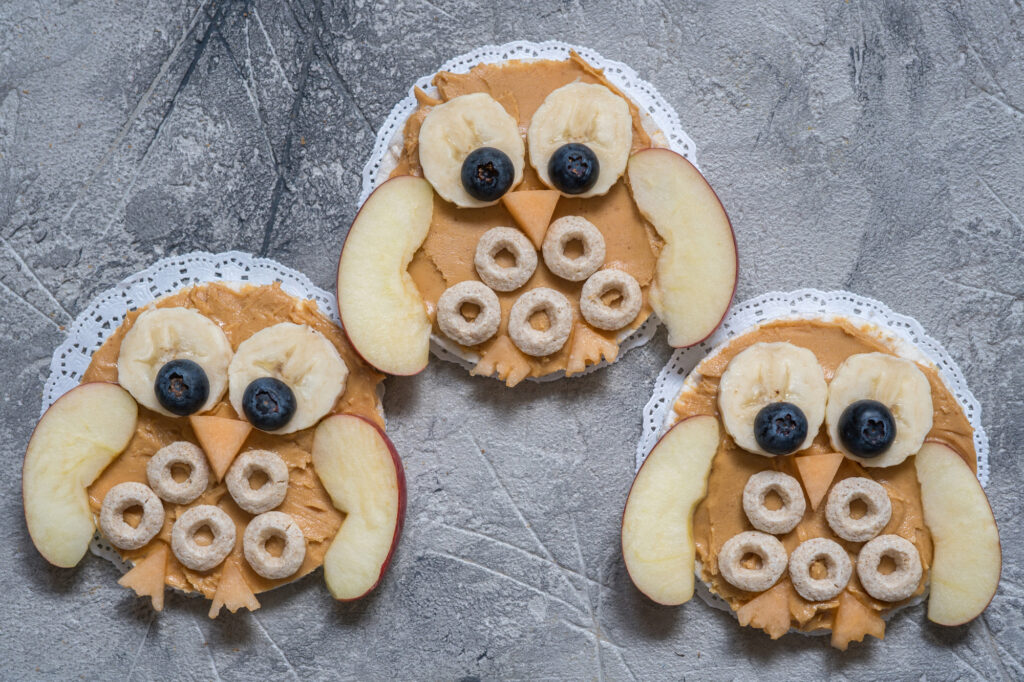Peanut butter.
You can gobble it like Presidents Jefferson, Carter, and Clinton, or consume enough (along with fellow Americans) to coat the floor of the Grand Canyon every year.
Peanuts (and peanut butter) don’t grow on trees like pecans and almonds. They’re not even a nut. Peanuts are legumes like beans, lentils, and peas that grow in pods (peanut shells). The peanut bush is green, knee high, with tiny yellow flowers. When the flowers wilt, the stem goes underground and four to five months later produces peanuts.
The South American Incas and Mayans loved the native peanut plant. The tribes roasted and ground them into “peanut paste.”
Can you picture Montezuma with a jar of Skippy?
The Spanish Conquistadores arrived in the 1600s. They were looking for gold but found peanuts. They brought the peanuts back to Spain where it eventually became an important crop, traded around the world. In Africa the peanuts were swapped for spices and elephant tusks.
The Africans called peanuts “goobers.” Sound familiar?
Peanuts arrived in the states in the 1800s. And it’s never been the same.
Most people believe that George Washington Carver, scientist, inventor, and educator created peanut butter. He didn’t but found so many uses for peanuts – from chili sauce to shampoo – that he became known as the Father of the Peanut Industry.
In 1884 Canadian Marcellus Edson patented “peanut paste” – somewhat reminiscent of the Incas and Mayans. Recognizing its potential, John Kellogg (of cereal fame) patented a process for making peanut butter from raw peanuts. He marketed it as a nutritious food for people who had trouble chewing solid food.
Given the state of dental care, it was a great idea.
Later, in 1928, Joseph Rosefield invented a process to make smooth peanut butter. He eventually sold it under the name Skippy. Rosefield mixed small pieces of peanuts into the butter and created two types – smooth and chunky.
Years later, Procter & Gamble launched a new peanut butter named Jif. It included sugar and molasses.
The rest, as they say, is history.
Today peanuts and peanut butter are an American staple.
According to Statistica, nearly 300 million Americans eat peanut butter – it’s in 94% of American households. There are enough peanuts grown in one acre to make over thirty thousand peanut butter and jelly sandwiches. It takes 850 peanuts to make an eighteen-ounce jar of peanut butter. By law, peanut butter must contain 90% peanuts and no artificial sweeteners, colors, or preservatives.
There’s a National Peanut Butter Day every year. You can visit cities called Peanut, California and Upper Peanut, Pennsylvania. Peanut butter festivals are held around the country. There’s even a National Peanut Butter and Jelly Day.
Peanut butter has morphed into all kinds of foods like crackers, cereals, cookies, cakes, health food bars, and pretzels. Think Reese’s Peanut Butter Cups, Ritz Bits, Ben & Jerry’s Peanut Butter World, Captain Crunch, and Oreos Peanut Butter cookies. There’s even a psychological term for the rare fear of getting peanut butter stuck to the roof of your mouth – archibutyrophobia.
Try to say that when you’re eating a PB&J sandwich.
Peanuts are nutritionally sound – a good meat alternative. They’re vegan and gluten free; a great source of protein; high in “good” fat; and provide thirty essential vitamins and lots of fiber. Peanuts are also very sustainable. They have one of the smallest carbon footprints of any nut.
Peanut butter even makes great art – check it out.
Nicaraguan-born American political strategist, television commentator, and co-host of The View, Ana Navarro says it best. “People say to me all the time, ‘when did you know that you had fully become an American?’ And I say, the day I realized I loved peanut butter.”
It’s time to get out your smooth or chunky, jelly and spoon, and go for it.







Yeah, peanuts are a bean! My family went to pick newly ripened peanuts and were shocked. We took some unripened peanut shells and opened them. The peanuts inside were really soft.
You know what you call a soft peanut? A bean. It’s really cool.
My granddaughter and I love peanut butter!
Love this blog!
Hope all is well
❤️
We love peanut butter!
What fun! We love our peanut butter (Skippy Super Chunky) and I’m so glad to learn from reading your excellent article that I do not suffer from archibutyrophobia. Yippee Skippy!! Thanks for another great read.